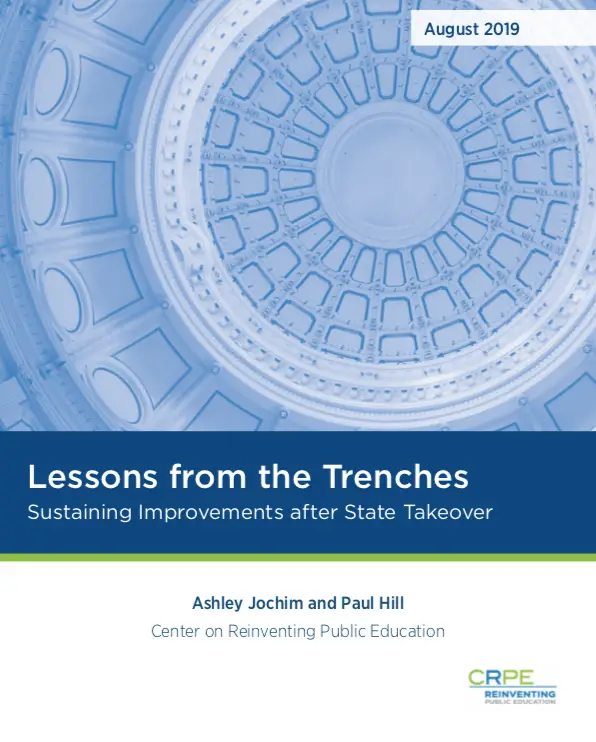While state policymakers are ultimately responsible for public schools statewide, their influence over local school districts has always been incomplete at best. State chiefs, the ostensible leaders of state education agencies, have limited powers and local school boards ultimately control most of the money and staff. As a result, when state leaders seek change in local school systems—whether to address financial mismanagement, corruption, or weak outcomes for students—they are often stymied by factors outside of their control.
State takeovers of local school districts emerged as one strategy for overcoming these limitations on state authority. State takeovers suspend the powers of local boards and put in place a state-appointed superintendent. They aim to provide states a direct means for influencing the oversight and operation of local schools that does not hinge on gaining local leaders’ cooperation.
While state takeovers can be powerful, they are never permanent. For practical and political reasons, all must end eventually. Sustaining improvements after a return to local control is key if state takeovers are to amount to anything more than a blip in a school district’s trajectory over time.
To understand how state leaders have sought to sustain the hard-won improvements they gained through state takeovers, CRPE researchers interviewed current and former state chiefs and superintendents whose tenure involved the takeover of local school districts. Researchers interviewed a total of 10 current and former senior state officials who had overseen state takeovers or served as state-appointed superintendents. They came from around the country and from states large and small. Their stories and answers to questions were rich in detail but thematically consistent about the difficulty of making lasting changes in district stability and efficiency, school performance, and opportunities for students.
The interviews provide key lessons for states seeking to make improvements in districts and schools navigating a transition to local control and emphasizes the need to focus on sustainability well before state interventions begin. The report summarizes the main themes that emerged from interviews in three sections:
- State takeover is an important but limited tool.
- States must build a local political base for takeover-initiated reforms.
- Exit strategies must set the conditions for long-term success.
The bottom line of the analysis is that state leaders should be cautious in how and when they use state takeover to drive change in local districts, and do more to ensure that state-initiated changes to the district have some amount of local political support. They should also seek legislation to insulate reforms seen as critical to the district’s long-term success from local political forces that might have caused the problems state intervention was intended to solve. State leaders should not wait until an intervention has timed out to begin planning an exit strategy. They should be clear about the conditions for ending state takeover, including what sufficient improvement looks like and whether an exit from state takeover comes with any conditions or limitations on the local board’s powers.
As several of the state officials in interviews said, states should not stand helpless in the wake of districts that are failing students and are either unwilling or unable to change. Takeover authority opens up possibilities for influence even in cases where state officials decide not to use it. But when local conditions compel the state to choose between action and continued failure, intervention is necessary. Even then it should be done carefully and with an eye to leaving the district more capable and with greater financial and political effectiveness than before.





